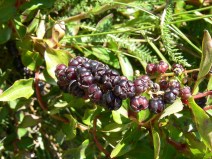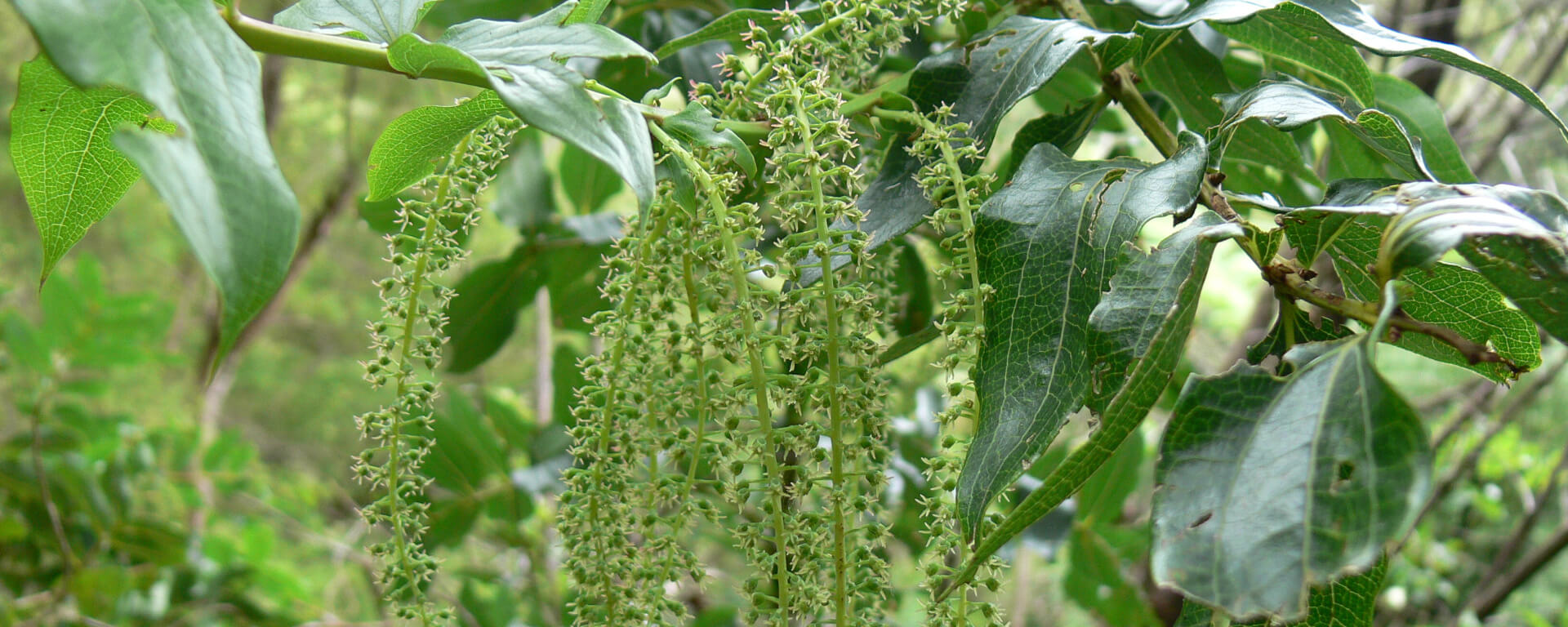Culture & History
Tutu is one of New Zealand’s deadliest plants. Although the fruit is edible, every other part of the plant contains the powerful neurotoxin tutin which attacks the muscular and nervous systems. The plant claimed the lives of many early Māori – especially children- when seeds were accidentally swallowed along with the fruit. European settlers also fell victim to the plant, with cases of severe injury and death resulting from homemade beer, wine, juice and pies.
Māori remedies for treating tutu poisoning were by no  means pleasant. One treatment involved hanging the victim upside down over a fire and forcing them to consume repulsive liquids until they vomited up the seeds. There are also accounts of victims being buried in sand to prevent them convulsing or being held in freezing water till their blood circulation stopped.
means pleasant. One treatment involved hanging the victim upside down over a fire and forcing them to consume repulsive liquids until they vomited up the seeds. There are also accounts of victims being buried in sand to prevent them convulsing or being held in freezing water till their blood circulation stopped.
Tutu can have dramatic effects on animals as well, with some early European settlers claiming up to three quarters of their livestock lost as a result of animals grazing on the plant. During an exhibition in Otago in the 1860s, an elephant was allowed out into pastureland to graze and consumed a large quantity of tutu. Several hours later it was discovered dead in a river.
Tutu is largely responsible for outbreaks of ‘toxic honey’ and beekeepers need to be especially wary of it. Contamination occurs when the passion-vine hopper insect feeds on tutu sap and excretes poisonous honeydew, which is then collected by bees and made into honey. There are reports of several settlers who were killed or made seriously ill by eating toxic honey. Though there is stricter regulation in place contamination does still occur and recently twenty people were poisoned from an outbreak in the Coromandel.
Uses
 Despite the potential danger, Tutu was an important source of food and medicine for many Māori tribes. Juice made from the fruit was a popular beverage consumed in large quantities and could be boiled with seaweed to make jelly. When fermented this juice had a laxative effect and was used to relieve the constipating effects of Tōtara, Rimu and Karaka berries. The leaves and shoots were used to dress wounds and could be made into lotions for the treatment of cuts, sores, bruises and boils. There are also accounts of it being used in the treatment of epilepsy and insanity with claimed success.
Despite the potential danger, Tutu was an important source of food and medicine for many Māori tribes. Juice made from the fruit was a popular beverage consumed in large quantities and could be boiled with seaweed to make jelly. When fermented this juice had a laxative effect and was used to relieve the constipating effects of Tōtara, Rimu and Karaka berries. The leaves and shoots were used to dress wounds and could be made into lotions for the treatment of cuts, sores, bruises and boils. There are also accounts of it being used in the treatment of epilepsy and insanity with claimed success.
The stems of larger species of Tutu could be hollowed out and made into flutes. Red and black dyes were extracted from the bark, and soot from burning Tutu wood was mixed with oils to make ink for tattooing. The juice from the berries stains skin brown and young Maori warriors who had not yet been tattooed would paint their faces with tutu juice before battle.

Tutu Photographs courtesy of Andrew Hodgson http://www.andydownunder.com


Awesome post. Everyone in New Zealand should know about the dangers of Tutu, seeing as it’s not uncommon to see the plant around public reserves and household gardens.
LikeLike
Thanks coastalprocesses!
I agree, It’s surprising that it is not more widely recognized given how deadly it can be.
LikeLike
Who is the Atua for Tutu. Hinemahanga being the female Atua
LikeLike
Good question. I have read that tutu was the offspring of Tane Mahuta and Hinemahanga, but I’m sure there are different accounts in different places.
LikeLike